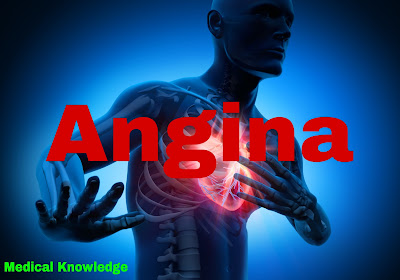Coronary artery disease (CAD) is a condition that develops when the major blood vessels that supply the heart with blood, oxygen, and nutrients become damaged or diseased.
There are several types of coronary artery disease, including:
1 - Stable angina: This type of CAD occurs when the heart's blood supply is temporarily reduced, usually during physical activity or emotional stress, causing chest pain or discomfort.
2 - Unstable angina: This type of CAD is similar to stable angina, but the chest pain or discomfort occurs more frequently, lasts longer, and may occur at rest.
3 - Myocardial infarction (MI or heart attack): This occurs when the blood supply to a part of the heart is severely reduced or cut off, leading to damage or death of heart muscle tissue.
4 - Silent ischemia: In some cases, people with CAD may not experience any chest pain or discomfort, but still have reduced blood flow to the heart, which can lead to damage over time.
5 - Prinzmetal's angina: This is a rare type of angina that occurs at rest and is caused by a spasm in the coronary artery.
6 - Coronary artery spasm: This is a temporary constriction or narrowing of the coronary arteries, which can lead to reduced blood flow to the heart and angina symptoms.
7 - Coronary microvascular disease: This type of CAD affects the small blood vessels in the heart and can cause symptoms similar to those of angina.
Angina :
Angina is a type of chest pain or discomfort that occurs when the heart muscle does not receive enough oxygen-rich blood. It is a common symptom of coronary artery disease, which is a condition in which the blood vessels that supply the heart muscle with blood become narrowed or blocked.
The criteria for typical angina :
1 - Retrosternal chest pain or discomfort: The most common symptom of typical angina is a feeling of pressure, tightness, or heaviness in the chest. The pain may also be described as a burning, squeezing, or crushing sensation.
2 - Triggered by physical exertion or emotional stress: The chest pain associated with typical angina is usually triggered by physical exertion or emotional stress, and relieved by rest or medication.
3 - Duration of pain: The pain usually lasts for a few minutes and typically goes away within 5-10 minutes of resting or taking medication (nitroglycerin) .
4 - Predictable pattern: The chest pain associated with typical angina follows a predictable pattern, occurring during specific activities or situations that increase the demand for oxygen by the heart, such as walking uphill or climbing stairs.
Atypical angina just fulfills two parts of the previous criteria.
Diagnosis of Angina:
A doctor may perform a physical exam, review the patient's medical history, and conduct tests to diagnose angina, including:
1 - Electrocardiogram (ECG): This test measures the electrical activity of the heart and can detect abnormalities that may indicate angina.
2 - Stress test: This test measures the heart's response to physical activity and can help diagnose angina.
Treatment of Angina:
1 - Lifestyle changes: Quitting smoking, following a healthy diet, exercising regularly, and managing stress can help reduce the risk of angina.
2 - Medications: Drugs such as nitroglycerin, beta-blockers, calcium channel blockers, and aspirin can help relieve symptoms and reduce the risk of complications.
3 - Procedures: Angioplasty and stenting can be used to open blocked or narrowed arteries, while coronary artery bypass surgery can be used to reroute blood around a blocked artery.
Prognosis :
The prognosis of CAD can vary depending on several factors, including the extent and severity of the blockages in the coronary arteries, the presence of other medical conditions, and the age and overall health of the individual.

